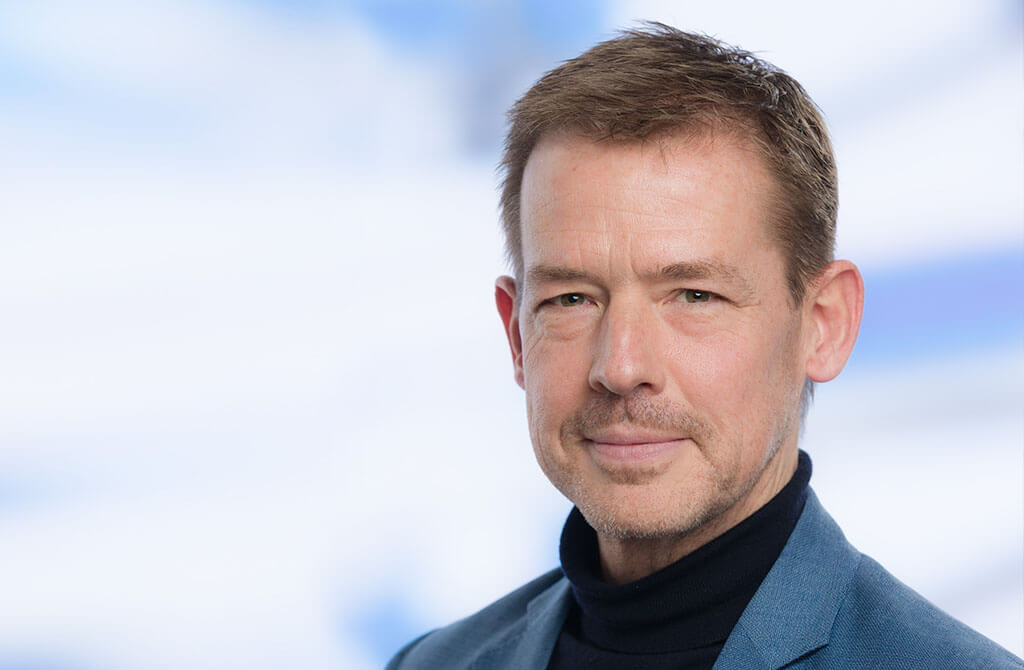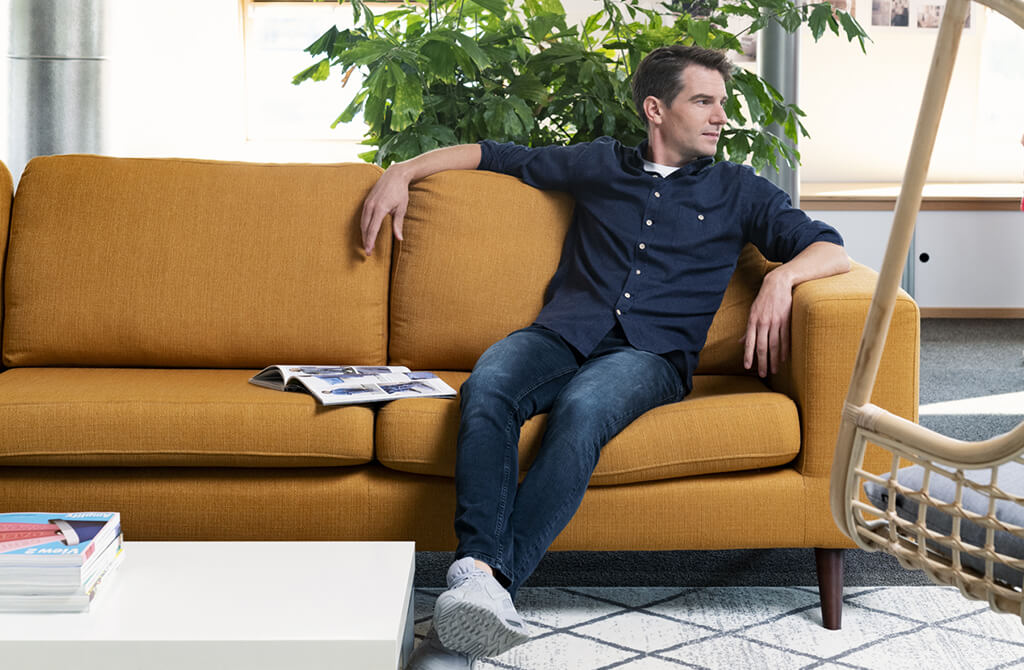Inspired by: Menno Kleingeld
VDL Groep has proven itself as an automotive innovator, manufacturing auto parts since their start in 1953, and for the last 25-years, leading the way with electric mobility in busses, coaches and Automated Guided Vehicles.
So as we all look towards the future of the auto industry, we couldn’t think of a better group of experts to ask for insight. This month we sat down with Menno Kleingeld of VDL Groep, to get his take on electric mobility, smart mobility and staying agile amidst the industry’s technological advances and electrification.

We kicked off our conversation talking about how the bus division came to be — uniting a group of legacy, innovative bus companies (who were also competitors) under one roof. After working with MODYN to design a strong, recognizable brand character, VDL was able to bring the group of busses and coaches together as one family. But, VDL had bigger plans. Plans to innovate and steer into the electrification and smart technology that was disrupting the market.
The pillars for this ongoing innovation are the disruptors DECAS — Design, Electrification, Connectivity, Autonomous Driving, Shared Mobility. And as an early innovator in electrification, VDL has been able to hone a modular development philosophy that has been used to create various electric busses, e-trucks and Automated Guided Vehicles over the years.
We wanted to know why that was so important.
“The moment you start to build on a platform that has building blocks that are reusable — almost like the Lego that is behind me,” Kleingeld pointed, “you want to develop your vehicle in such a way that the building blocks are reconfigurable and reusable in the next incarnation of a vehicle. So, we use our building blocks for a range of different, so-called heavy duty vehicles, primarily of course in various electric buses. But, also to enter other markets with our electrification strategy. For example, there is a whole market out there for trucks, and we have used the same building blocks from the e-coach to create long-distance electric trucks.”

VDL also works on the infrastructure needed to support the electric vehicles you manufacture — like charging infrastructure and energy storage. How did you solve some of these new operating challenges for the e-bus?
“All of a sudden you have these vehicles that no longer run for a full day on a tank of fuel, which turned out to be a huge challenge for a public transport operator to figure out. So we provided a turnkey solution that provides the charging infrastructure in the right quantities as well as the right locations to support the operations, as well as the installation, rather than simply handing over the keys and saying, ‘good luck,’ to the operator.”
“We also trained the maintenance staff and drivers. Drivers, for example, no longer needed to drive with ‘two feet’. We train them and we teach them how they now have an accelerator pedal that, if you release it, starts to regenerate energy into the batteries rather than generating wasted heat on the brake pads.”
“VDL also provides electric energy as part of our solution, because if you can predict the energy needed for an operation, you can also plan much longer term energy requirements. That makes it easier for us to purchase and provides more predictable pricing than last minute purchases.”
You just touched a bit on the smart technology aspect that VDL also works on. What more can you tell us about the technologies used within your vehicles that make them smart?
“With the introduction of electric vehicles, we also introduced the concept of ‘connected’ vehicles,” says Menno Kleingeld. “We can monitor the behavior of the vehicle during its operation. If a fault develops, we can trace it back to the data received. This helps us predict if the event will happen again in similar circumstances.” “Being ‘connected’ allows us to learn from our data to make our vehicles better and improve our engineering.”
“We also have digital models that mimic the exact behavior of a vehicle in a virtual environment. This allows us to simulate future releases of a vehicle under the same circumstances.” “So, data is getting increasingly important. We use it not only to learn from today but also to engineer our vehicles for the future,” concludes Menno Kleingeld.

It really sounds like VDL has their hands in every part of the process.
“We may not be the largest vehicle manufacturer, but we are known for our pragmatic approach,” says Menno Kleingeld. “We are entrepreneurial and fast in our decision making, execution, and engineering,” Kleingeld emphasizes. “Our vehicles may not be perfect from the first day. Together with our customers and partners, and with an open mindset, we continuously improve our products.” “This accelerates our learning curve significantly. Developing a vehicle behind closed doors, making hundreds of prototypes, and testing them ourselves doesn’t start real-world learning,” Kleingeld explains. “Real-world learning, at the end of the day, really matters,” concludes Menno Kleingeld.
“So I would say, do we have our hands in everything? No, not yet. Technology development is a continuous process that doesn’t stop. For example, battery electric is now followed by hydrogen electric vehicles for the right use case. I think there’s still a lot to be done, but that comes back to our initial statement, and our vision of these disruptions happening at the same time. Being aware gives us an open mindset to use these disruptions at the same time. They’re no longer a threat to us, but an opportunity.”
Do you think VDL’s attitude of being open and constantly learning has allowed you to be future-proof?
“If you want to be a front runner, you need to be fast. Developments needs to be thorough, but not carved in stone. As VDL, we will never reach the scale of some of our competitors, so we need to do things differently and be on top of technology. It also helps that we don’t make our own key components, so we can use the latest set of technology and integrate it into our vehicles. Every disruption is an opportunity for us to expand our footprint in the market.”
VDL is obviously incredibly agile. So, what would you say the automotive industry, as a whole, needs to do to stay agile amidst all of these technological advances?
“The industry needs a disruptor. Not necessarily disruption, because disruptions are there all the time. But if you look at the passenger car markets, for example, e-mobility would not be growing at the pace it is right now without the presence of a company like Tesla. And I think, especially in the European bus markets, VDL has been an early innovator and has been driving the markets pretty hard.”
So, what’s next for the industry?
Automation
“We have not touched on the topic yet, but automated driving has been a part of our history at VDL for a while. We supply container AGVs into the harbors of Rotterdam and Singapore. But, it will take time before automated driving becomes commonplace for moving people in inner cities. However, we have the technology building blocks in-house to anticipate mass adoption when it gets there and become a provider of vehicles to the leaders in mobility as a service.”
Zero accidents, zero emissions and zero congestion.
“Going forward, I think we will see more technology that facilitates driving and makes it safer, “says Menno Kleingeld. “Think pedestrian detection by the vehicle with radar, camera integration, and sensor fusion. This technology ensures you don’t hit that unseen cyclist.” “Vehicles will also gather data to understand environments and predict busy times. They can reroute you or give traffic light preferences to keep the flow moving.” “Finally, zero emissions are crucial. The Dutch government has decided that by 2025 all public transport buses purchased must be zero emission. By 2030, all public transport buses in the Netherlands will be zero emission vehicles.” “At a certain point, you won’t even be able to enter certain cities in a petrol car,” Kleingeld concludes.

Design emphasis
“What’s also important going forward is the power of design. When you’re starting a disruption, it is important to make that disruption visible. I think that is a change that we have made — with the help of MODYN — when we first introduced larger fleets of electric buses. We created this really advanced look that made people notice something different. Something that stands out from a typical diesel vehicle. It made people think, ‘this must be an electric vehicle.’”
Humanizing e-mobility
“I think more and more public transport is an extension of people’s workplace,” says Menno Kleingeld. “We need to facilitate this change in terms of privacy and use of materials.” Especially now also with the COVID situation, it’s crucial to ensure that surfaces have special coatings that are resistant to certain bacteria. “Air conditioning systems that clean the air inside the vehicle are also important,” Kleingeld adds. This ensures a safer environment for passengers. Design also plays a major role here, too. Because by designing a more appealing character, people will want to make use of this mode of transportation more, promoting e-mobility and sustainability.”
Recyclable materials
“I see a future that’s driven by lifecycle analysis — that means using materials that can be recycled. Not just for batteries, but also the materials used to build the vehicle.”





